BUFFALO, New York – Phylicia Dove fails to fight back tears as she talks about the massacre that shattered her community’s haven in Buffalo’s Masten Park neighborhood.
“Tops market was a place of community, a safe space for us to meet, to talk, to be together,” she told CNN. “There’s no one here who hasn’t visited this Tops. It was ours. Even if it wasn’t the best, it was ours, and now our safe space has been infiltrated and taken from us and that is something we are mourning.”
The beloved Tops is the only supermarket in a four-mile radius within this largely Black neighborhood and one that took more than a decade to get. It has now been scarred by a deadly rampage whose remnants are evident in the stretches of police tape that now guard the store.
But the real guardians of this grocery store are the hundreds of residents who have swarmed Jefferson Avenue, mourning, praying and beginning their heartbreaking journey toward healing.
The tragedy began when a typical Saturday of grocery shopping turned into a violent nightmare as 18-year-old Payton S. Gendron arrived at Tops and gunned down people inside and outside of the store, police say. Eleven of the thirteen victims, ages 20 to 86, were Black.
Gendron has described himself as a White supremacist in a hateful rant online. And residents want the world to know that what happened in their community was an act of terror.
“This has to be labeled a racist hate crime and we want it known that he is a White supremacist,” Dove said. “We also want this spoken about as terrorism, and to make it sound any softer than that is a slap in the face for the families grieving today.”
The slaughter has left this tight-knit community angry and heartbroken, but East Side residents like Tony Marshall have not let their grief keep them away from each other.
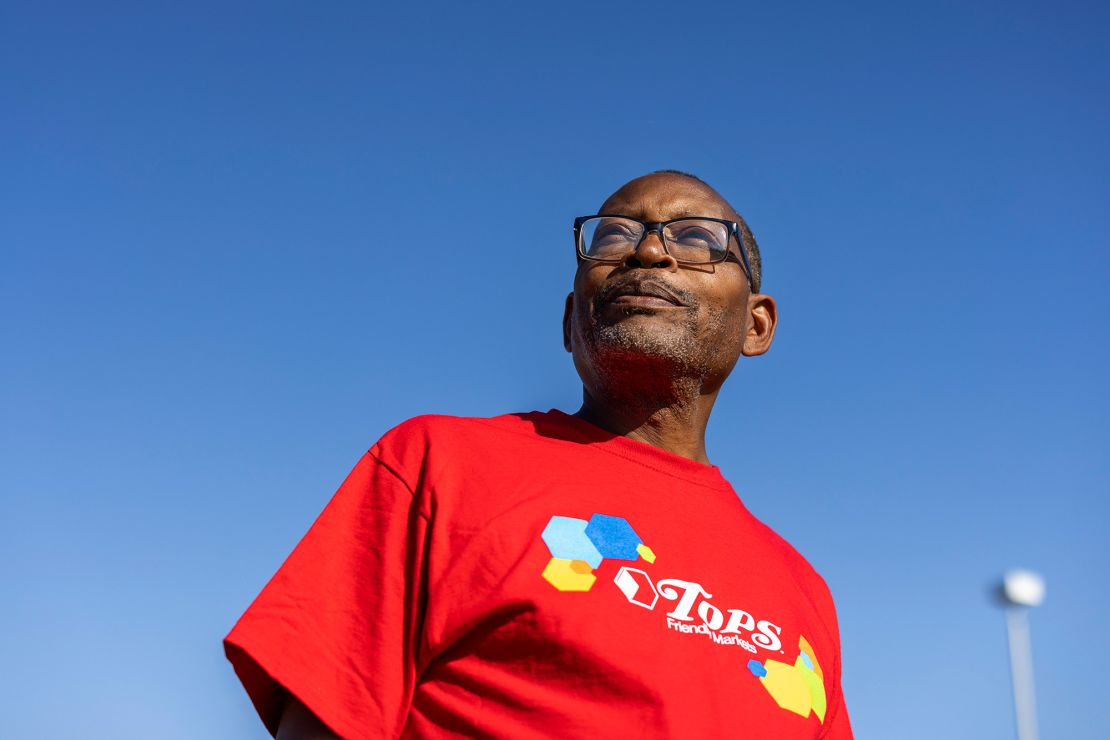
Marshall spent hours under the sun, grilling hot dogs on the corner where Tops loomed behind him, only a few feet away from where he discovered the bodies of three of his friends the day before.
“It was chaos,” he says, looking back at the Tops parking lot. “People crying, people screaming, and I joined them when I saw those bodies, all by the door. Bodies of my friends.”
Marshall, affectionately known in town as “Mr. Tony,” is cooking for hundreds of residents in mourning on Buffalo’s East Side. The jitney driver, who spends a majority of his days at Tops picking up and dropping off employees and shoppers, says he is “emotionally drained.”
“It started the moment I got here and saw my people on the ground and it hasn’t ended since,” he told CNN. “There’s nothing else I want to do but be here, because this is one of them deals where if we let that grief fester, none of us are going to want to be here. And if we’re not here, once again the community suffers.”
Sounds of hope and pain engulf the block, brief laughter mingled with audible crying. Across the street and under a tree commemorated with flowers and candles for those lost, a man wraps his arms around a woman whose tears appear to have no end.
Beside them, a group of young people pass around a small microphone, shouting words of hope. “We will not be broken!” one woman cries.
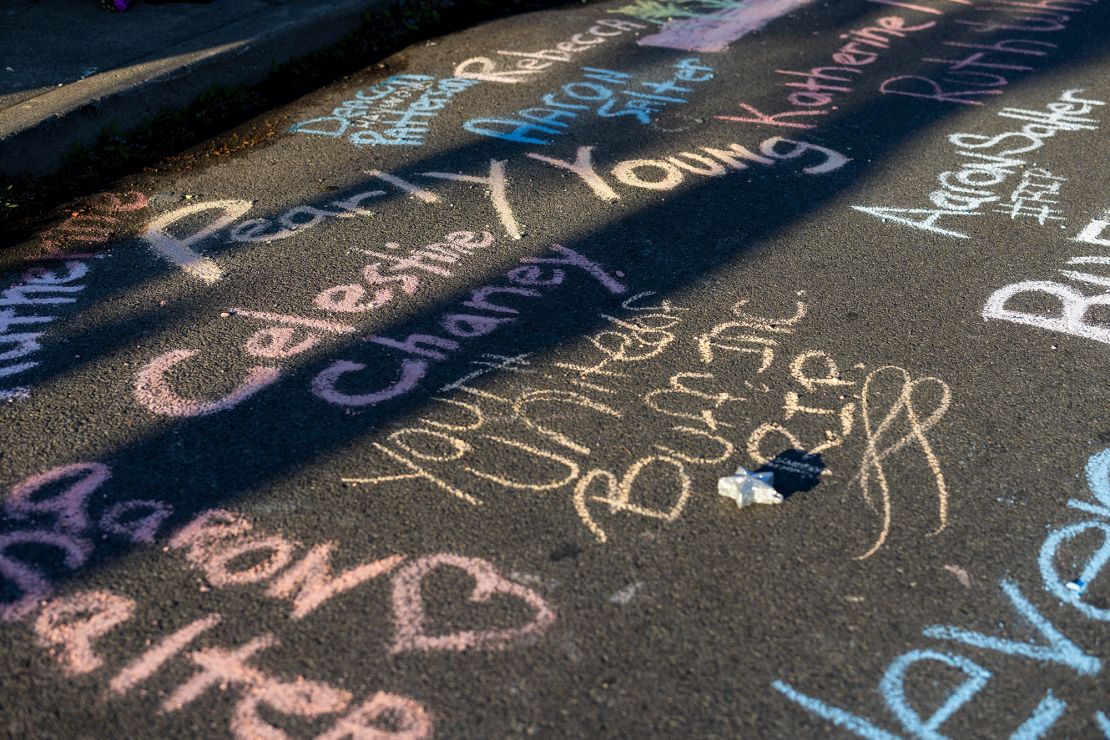

As the community begins its efforts to heal and rebuild, Dove, a local business owner and activist, says she can’t help but worry this won’t be the last time tragedy strikes a Black community in America.
“Where can we exist and be Black and safe?” she asks. “And if it’s not our grocery store, or our church, or any other place where we’ve been shot before, where do we go to exist freely?”
‘We are hated, and now we are being hunted’
Heavily armed and wearing tactical gear, Gendron, who is from Conklin, New York, traveled about 200 miles to Tops with the intention of continuing his shooting rampage beyond the supermarket, police say.
His choice to target Tops was not random; in the hateful rant, the author, who claims to be Payton Gendron, says the supermarket in Buffalo is in a ZIP code that “has the highest Black percentage that is close enough to where I live.”
The ZIP code that includes Tops, 14208, is 78% Black, according to the Census Bureau’s 2020 American Community Survey. It is among the top 2% of ZIP codes nationwide with the highest percentage of Black population and has the highest percentage of Black population of any ZIP code in upstate New York.
“He knew what he was doing when he came for us,” Raqueal “RaRa” Watson, who was born and raised nearby, told CNN. “It makes us scared, especially as a mother, that someone could come all the way here just to murder us. Ain’t none of us slept last night. This will cause permanent trauma.”
Tops was her local grocery store, she says while sitting on a chair in front of the memorial on Jefferson Ave, where a woman lays flowers before bending down to offer a prayer.
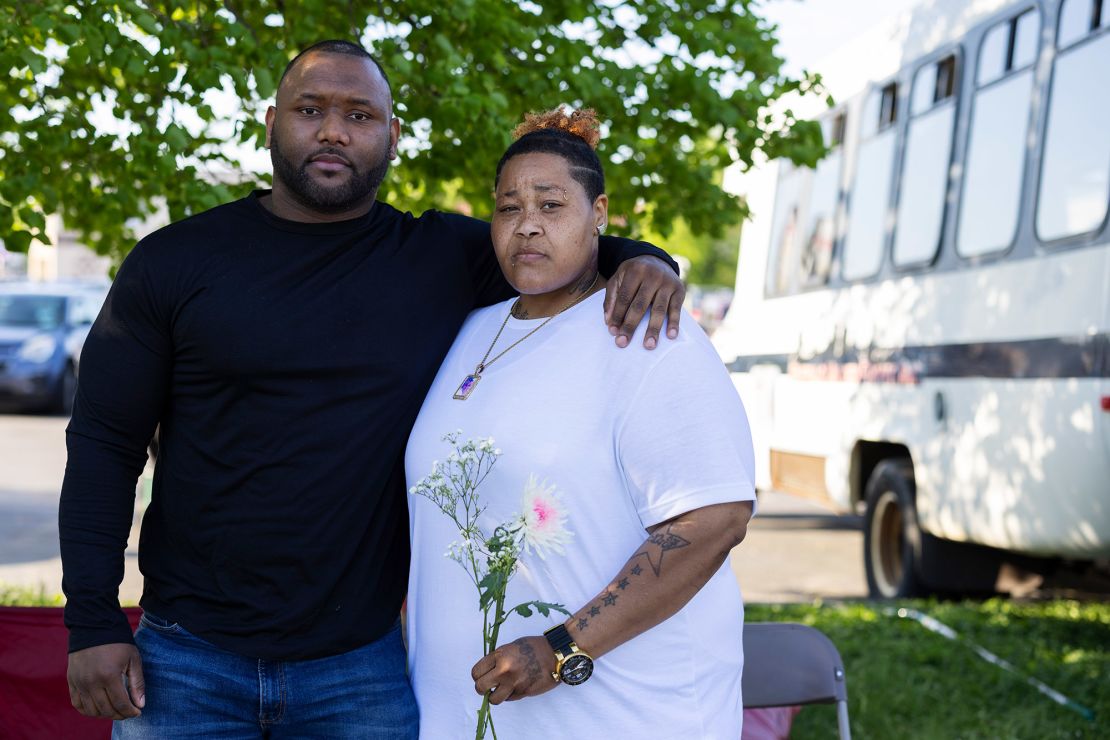
Aaron Salter, the hero security guard who engaged the suspect but was fatally shot, watched her grow up in that store, she says.
But despite the memories and the love she held for Tops, the mother of three said she and her family do not plan on ever going there again.
“All we did was be Black,” Watson said. “White people take everything from us. Even the only grocery store in our community. That’s what they’re doing to us.”
Dove, the community activist, is also a mother and she says she’s consumed by another issue: How does she explain the incident to her two young children, who she fears could one day become victims of similar incidents deeply rooted in racism against Black people?
“We shouldn’t have to teach our children that at some point their skin color is going to mark them as different and could mark them as a target,” Dove said. “In this country we are hated, and now we are being hunted. How do you explain to a child there was a massacre at a grocery store because someone hates their skin? What age is appropriate for me to tell them that could happen to them?”
“Growing up not ever thinking or knowing your skin is a problem is a privilege Black bodies don’t have,” she added.
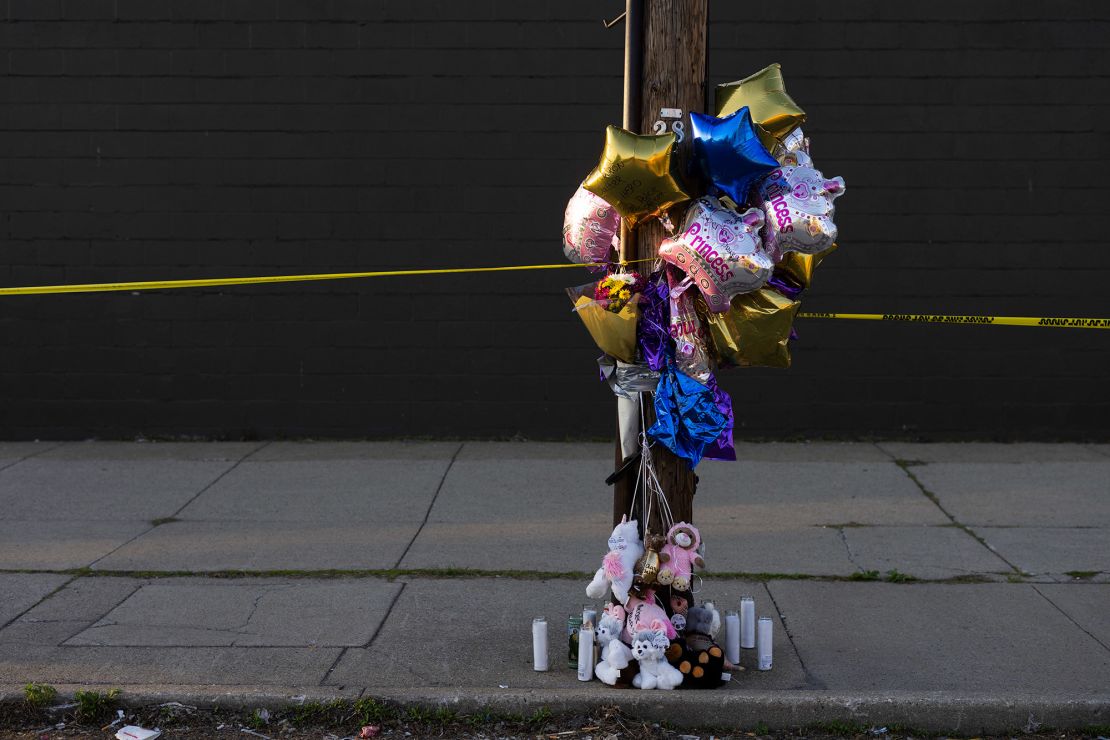
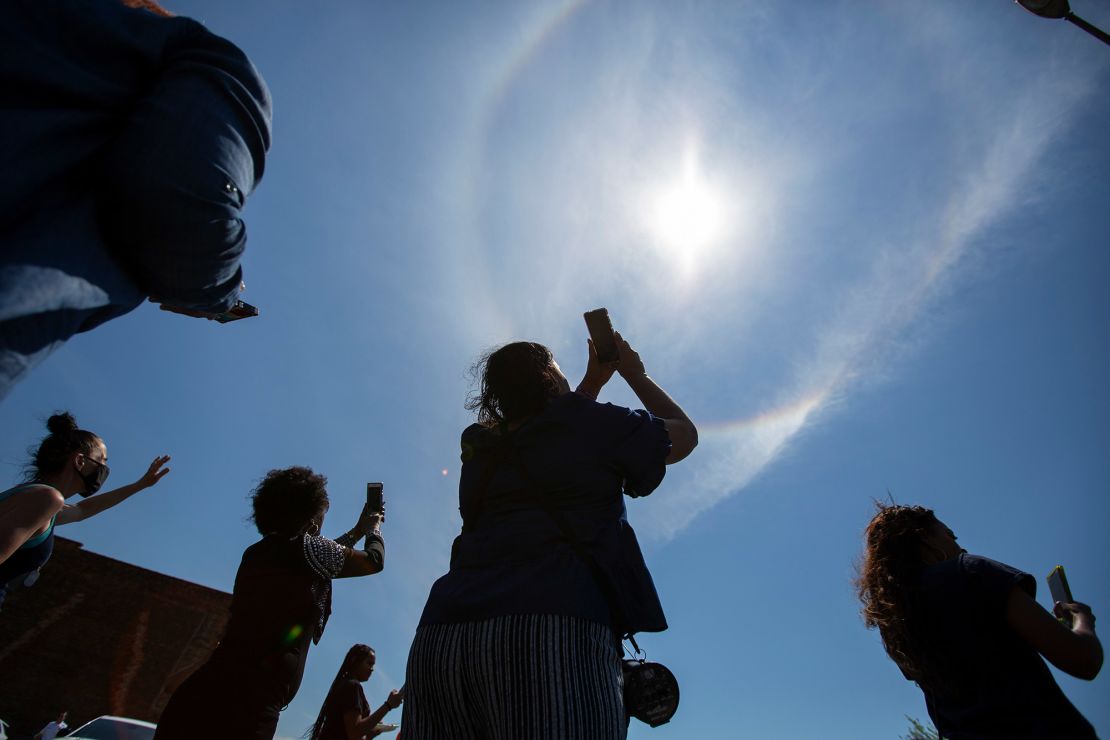
‘It was about the invisible becoming visible’
Martin Bryant leans against the porch of his home – which sits on the same block as Tops – as his two nephews stand beside him. The three have spent the day standing outside their home, they say, unable to accept that the neighborhood they see now – still swarming with police officers, reporters and dozens of mourners – is the same one they call home.
Bryant was 33 years old when Tops opened up in his neighborhood. After living in the same house on Jefferson Avenue his entire life, he finally had a local grocery store.
It’s a blessing many people take for granted; a reliable place to go to for last-minute dinner ideas, sweet tooth cravings, or to casually stroll aisle to aisle going down a handwritten grocery list.
So when Tops opened in 2003, life completely changed when this community got the grocery store they’d been dreaming about, and fighting for, for more than a decade.
“Tops was a big boost to the community. We actually had a grocery store to call our own. It wasn’t a convenience store like a 7/11, it was a real grocery store. It made everyone happy.” Bryant told CNN. “Local leaders fought hard for it and the location was perfect because it is right off two bus lines.”
A video from the supermarket’s grand opening shows a level of joy from residents, who are seen cheering and filling up the aisles of their new store, disturbingly contrary to the horror seen within those same walls on Saturday.
“For the community that had long lived without viable fresh fruits and vegetables this was a sign of progress, a sign of being and feeling recognized,” Dove said. “A sign that the East Side mattered and was an area of the city worth being invested into. It was about the invisible becoming visible.”

Before Tops, residents had to rely on a “dirty corner store that was never stocked” or travel to neighboring areas to shop. When winters were bad, it made it especially difficult, Bryant said, and for older people and low-income residents who couldn’t afford to own cars, things were more dire.
Now, Bryant fears for the elderly and the less privileged in his neighborhood who might not feel safe going into Tops anymore.
“Elderly people go there. My mother, who was in a wheelchair, got to go there any day she wanted to get a few things,” Bryant said. “We try to have hope, because what will they have if they don’t have Tops? Even I might not want to go in there again.”
The nearest grocery store is a Wegmans, which is about 4 miles away. Although it’s a 15-minute drive, public transportation could make the journey up to an hour long.
“To have that only space for us, celebrated in 2003 so not too long ago, the only supermarket in what really is a food desert, taken away is traumatizing,” Dove said. “It’s a sense of being kicked when we were already down, so it’s a different level of pain we’re feeling. We didn’t have much, and you took what was left.”
Tops Friendly Markets said in a statement the store will be closed “until further notice,” but the community fears it will never reopen. And even if it does, Bryant says, walking across a parking lot and into a store where the dead bodies once were might be impossible.
“We are broken, possibly irreversibly,” Dove said. “Will we ever be the same? No. Will we rebuild? Yes. Because we don’t have a choice. Black people in America have never had a choice.”
Correction: A previous version of this story gave the wrong distance for the neighborhood's nearest supermarket. It is four miles away.




